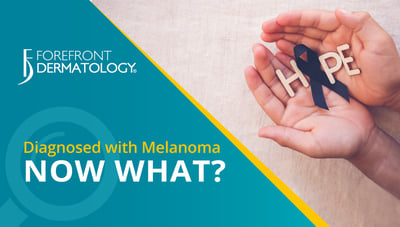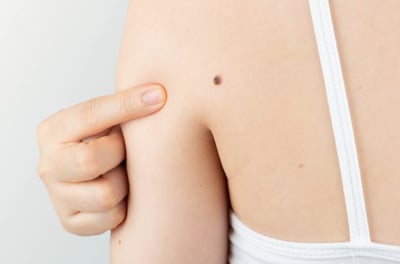
Skin cancer is the most common form of cancer in both the United States and the world. Each year there are more new cases of skin cancer than combined cases of breast, prostate, lung, and colon cancer. According to the American Cancer Society, over 3 million basal and squamous cell skin cancers are diagnosed in America each year with an estimated 99,790 new cases of melanoma predicted for 2022.
Skin cancer knows no boundaries. While your chances of getting melanoma increase as you get older, it’s one of the most common cancers in young adults ages 25 to 29. There are certain factors that can increase your risk, but even if none of these apply to you it doesn’t mean you are safe.
- Light-colored skin, hair, and eyes
- People with moles or abnormal moles
- Excessive sun exposure
- History of sunburns
- Weakened immune system
- Sunny or high-altitude climates
But the real question is, is skin cancer genetic?
According to Dr. J. Scott Kasteler, board-certified dermatologist with Forefront Dermatology, “In some cases, skin cancers are hereditary with an increased risk of developing the disease being passed from parent to child. Generally speaking, hereditary cancers are often diagnosed in people at an unusually early age, can occur more than once in the same location, and might be present in one or more family members. Because hereditary cancers are passed genetically from parent to child, they tend to run on only one side of the family.”
Researchers have identified several genetic risk factors for melanoma, including gene mutations that cause an increased risk for melanoma. The most notable genes associated with a genetic risk of mutation leading to skin cancer are CDKN2a, also known as p16, MC1R, MITF gene, and the TERT gene. Researchers are still learning about how to use genetic testing to help take care of families with genetic risk. It is estimated that roughly five to ten percent of melanoma cases are hereditary and caused by a gene mutation or variant.
Genetics matter, but so does UV Exposure
“It’s important to remember that we are all susceptible to skin cancer, genetic or not,” noted Dr. Kasteler. “The most common cause of skin cancer is cumulative exposure to the sun’s UV rays. Be smart when outside. Avoid sun exposure during peak times, wear sunscreen and reapply regularly and seek shade when possible.”
Additionally, starting preventative measures at a young age and role modeling it for children has a lifelong impact. “Parents play a critical role in the prevention of skin cancer in their children,” added Dr. Kasteler. “Good sun protection when children are young is in the parents’ hands. Sunscreen use and sun-protective clothing are a must when outside. The early sun-protective behavior by parents also teaches great lifetime habits.”
Be Proactive
Especially in the case of melanoma, early diagnosis can be the difference between life and death. According to American Cancer Society research, if melanoma is caught in stage one, the 5-year survival rate is 97%. Late detection survival rates can be as low as 15%. Monthly self-skin checks and yearly skin exams by your local dermatologist can help stop skin cancer in its tracks. If you spot an abnormal mole, don’t overlook it, and don’t delay your appointment. Find a location near you today.
Sources:
Stanford Health Care. Is skin cancer genetic? Accessed April 29, 2021. https://stanfordhealthcare.org/medical-conditions/cancer/skin-cancer/causes-skin-cancer/genetics-skin-cancer.html
National Cancer Institute. Genetics of skin cancer (PDQⓇ)-health professional version. Accessed April 29, 2021. https://www.cancer.gov/types/skin/hp/skin-genetics-pdq





